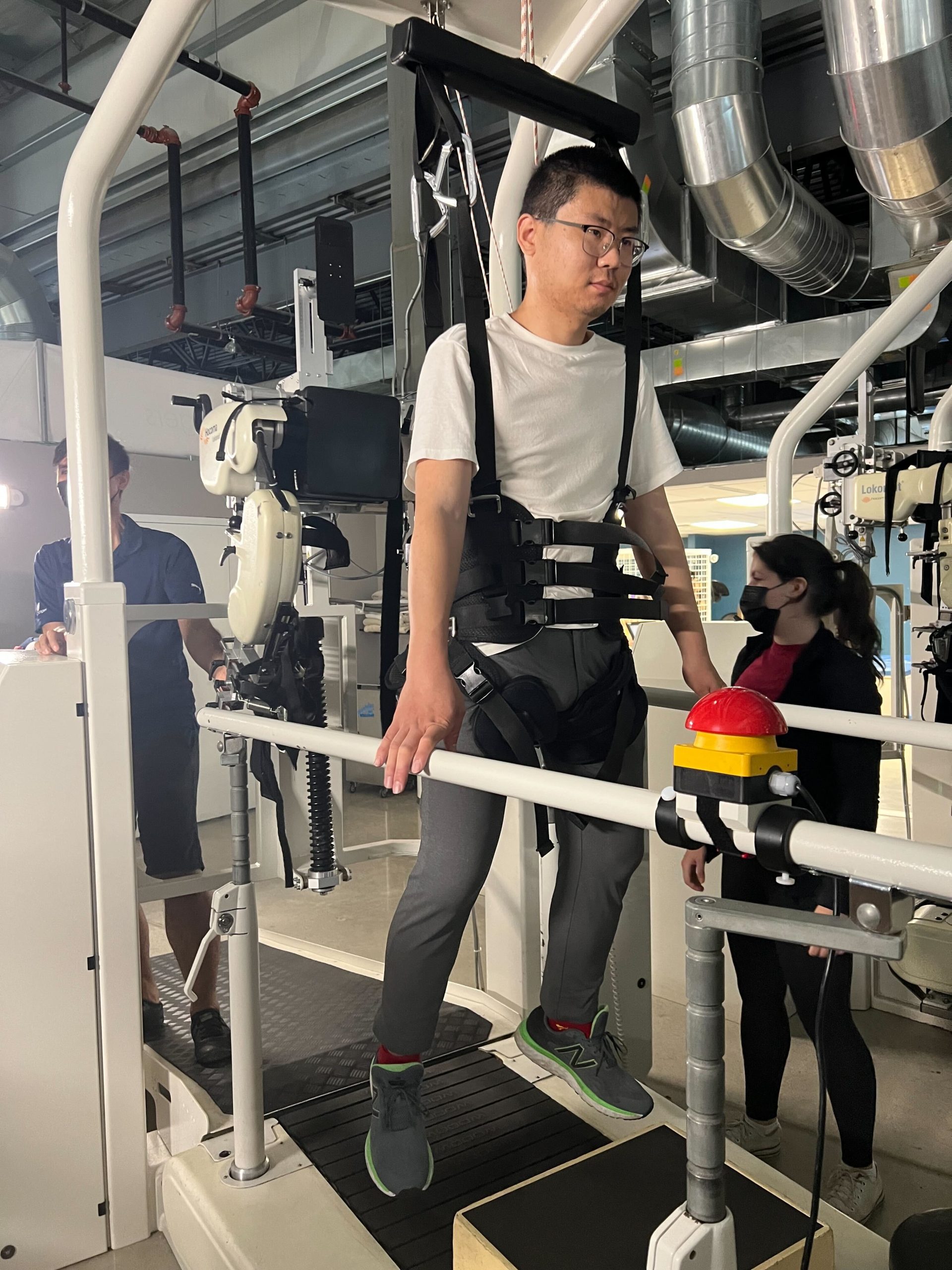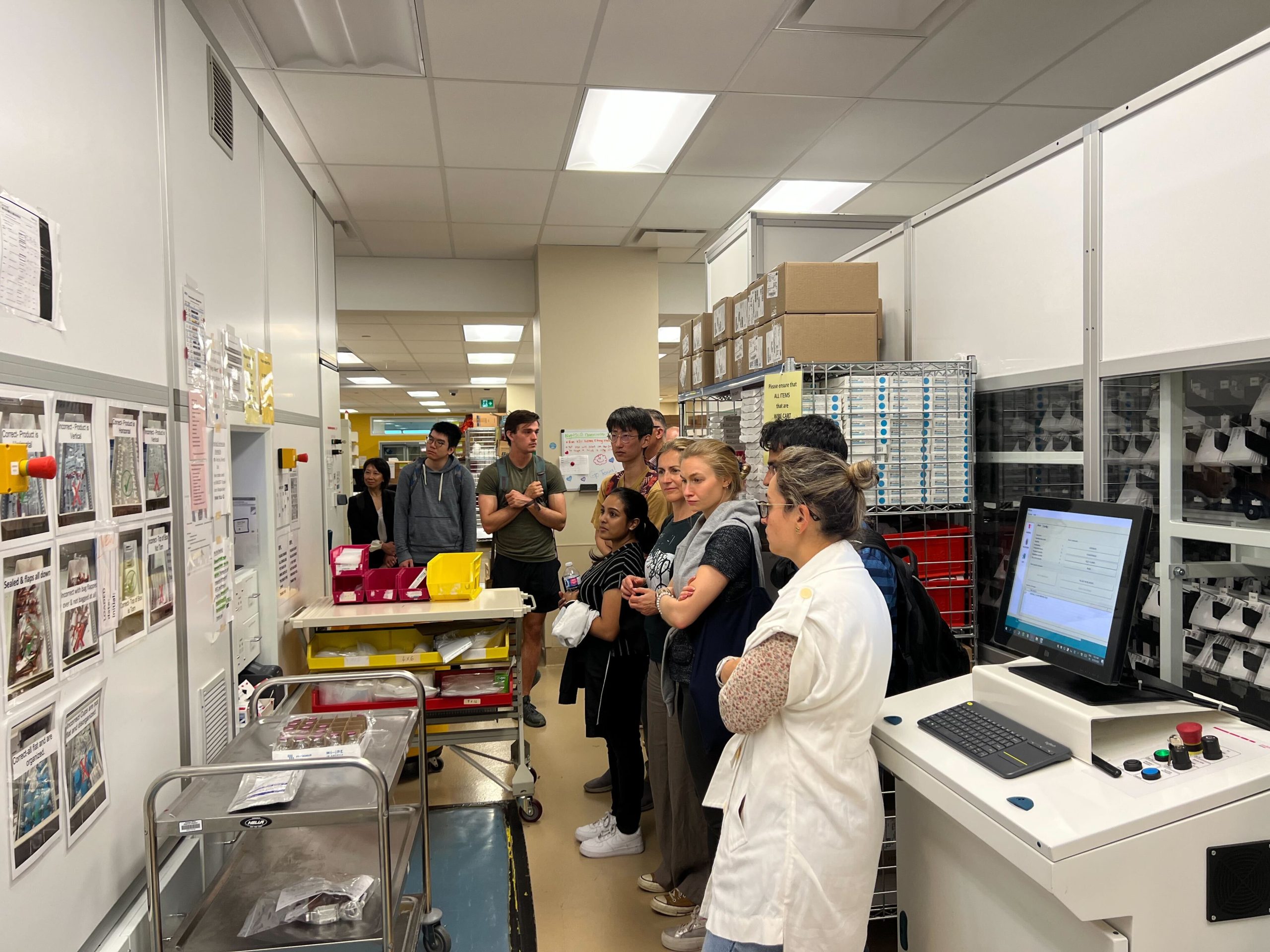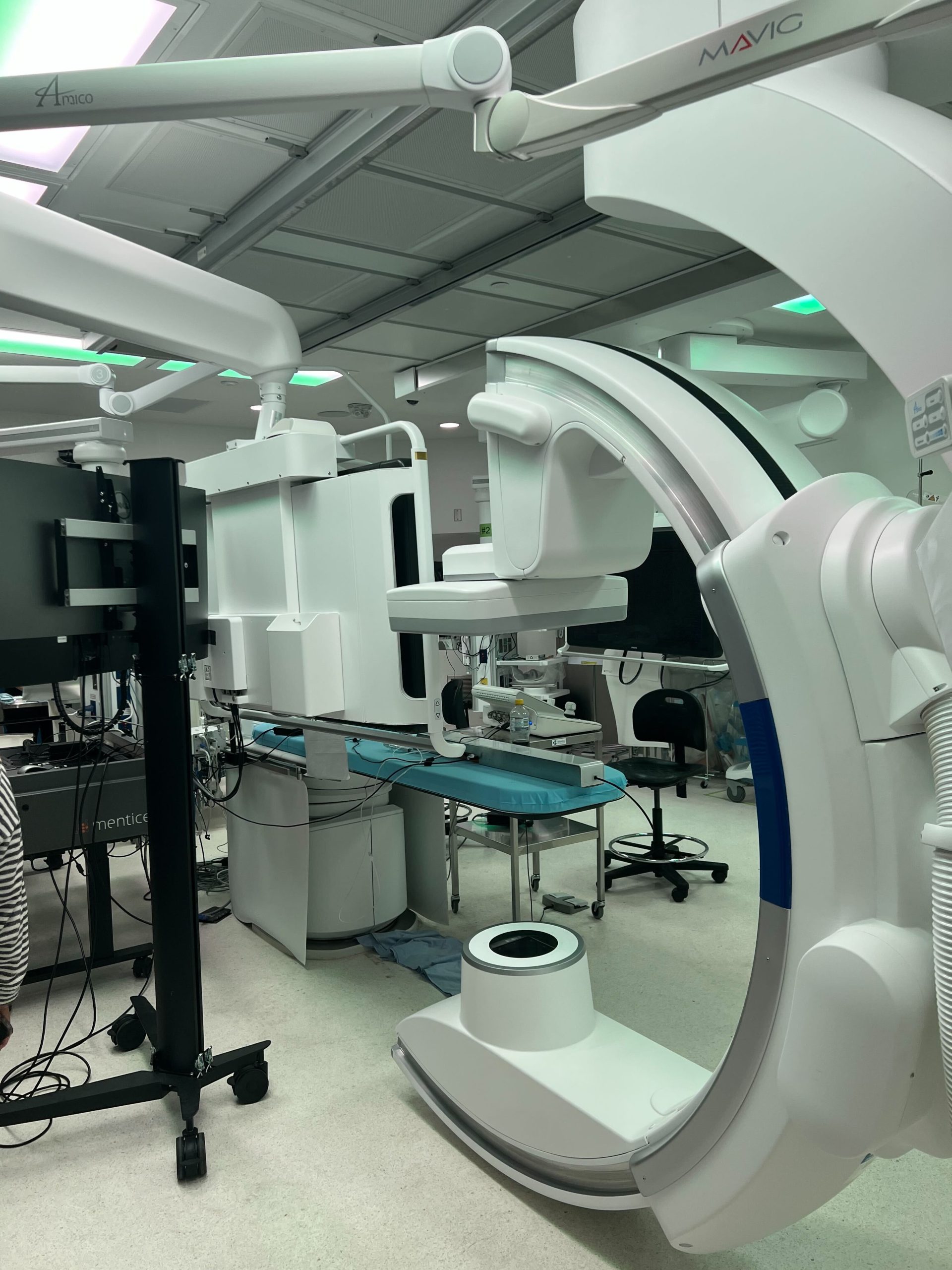Through a hands-on exploration of robotics across partner healthcare sites in Toronto, HeRo trainees gained firsthand experience into how robotic technology is being adopted and deployed in local healthcare settings.
Field trip faculty lead Professor Rosalie Wang and program manager Kimberly Colburn set up three site visits for students: Neurochangers Etobicoke, Humber River Hospital and Dr. Vitor Pereira’s RADIS Lab at St. Michael’s Hospital.
The HeRo graduate training program, an NSERC/CREATE program, aims to advance the frontiers of research by tackling robotic challenges in surgery, assistance and rehabilitation — three domains where robots are making the greatest impact.
Neurochangers Etobicoke

Acting clinic director, JP Rimando, led HeRo trainees on a tour of the Neurochangers Etobicoke facility — a rehabilitation centre focusing on the effects of complex neurological and orthopaedic injuries and illnesses. The facilities provide a range of traditional and robotics equipment for therapists to use, including an Amadeo — the only robotic hand and finger rehabilitation device designed for treating neurological impairments — and an ALFA Stabilometric Platform, which is a simple yet comprehensive biofeedback device used for testing, measuring and training balance.
A highlight of the visit was the demonstration of the Lokomat — the most advanced robotic technology available for gait training and neurological re-patterning. HeRo trainee Hang Liu volunteered to be placed in the machine. He was suspended above a treadmill in a stabilizing harness, with his legs secured to the Lokomat’s robotic legs. The robotic legs guide the patient’s legs in an efficient and effective gait pattern. This motion, in addition to weight bearing through the legs, stimulates re-patterning of the central nervous system. Speed, range of motion, body weight support and guidance are all controlled by the therapist. Lokomat also charts user progress with measurements for stiffness, strength, range of motion and distance.
Humber River Health

HeRo trainees were welcomed by Carol Hatcher, executive vice-president and chief of clinical programs, Jennifer Yoon, deputy chief nursing executive and vice-president, quality, professional practice and risk, and Derek Hutchinson, director, professional practice, education and research, where they were given an overview of the hospital and its innovation mission.
Humber River Health been actively implementing robotics technology to streamline coordination, systems and procedures. Under the guidance of Peter Bak, chief information officer and Daniel Tziatis, program director, mental health and command centre, students were able to visit their impressive command centre, featuring a wall of monitors with each tile dedicated to a different insight into movement and status within the hospital.
They also toured their pharmacy facilities led by Albert Karas, program director pharmacy services. The dispensing of medications has been largely automated, leading to tremendous reduction of errors at every step of the process in getting the correct pharmaceuticals to patients in the right dosage. The medication trays are even delivered to nurse’s stations via a robotic system that is able to lift an entire cart, navigating hallways and elevators in back areas away from patients. Finally, students visited the lab and observed the processes by which blood tests are run — 24 hours a day, 7 days a week. Each test tube is labeled with a bar code, directing the machines which tests to run, creating slides if needed, and then stored for up to three days in case additional test are needed. The additional safety and multiple verification points in their systems has led to improved patient outcomes in addition to increased patient satisfaction with decreased wait times.
RADIS lab at St. Michael’s Hospital

Dr. Vitor Pereira, who performed the world’s first robot-assisted brain aneurysm surgery in Toronto in 2019, is a professor of Surgery and Medical Imaging at the University of Toronto, director of Endovascular Research and Innovation in the Department of Surgery at St. Michael’s Hospital, and co-lead of the RADIS Lab with clinical research technologist Nicole Cancelliere. They are doing pioneering work in the neurointerventional space, largely in stroke intervention and treatment.
Students had to opportunity to see this technology in action and experience first-hand how advancements in healthcare robotics are helping make life-threatening brain surgeries safer for patients.
In a 2023 NeuroNews article, Dr. Pereira says robots are one of the technologies that will have a lasting impact in neurointerventional surgery, “The three technologies I believe will contribute to this future are robotics, AI and neuro-dedicated intravascular imaging. Alone or combined, they may improve the accuracy of neurovascular disease diagnoses, expand our understanding in different dimensions, and facilitate the execution of procedures with optimised control and automation.”
Invaluable hands-on experience
HeRo trainees Stephanie Benjamin and Nan Liang share how the field trips were invaluable experiences in better understanding the current landscape of robots in healthcare settings:
Benjamin says, “I found the HeRo trips extremely insightful! In the last few weeks, I’ve learned a lot about the types of robotic devices being used in healthcare and how prevalent they’ve become. I also really enjoyed these trips since they gave me the unique opportunity to witness firsthand the use of robotics in the medical field. I’m now even more excited to see the new innovations of healthcare robotics in practice and one day be able to contribute to this field!”
“I found the field trips incredibly valuable as they provided me with a better understanding of how things work in healthcare facilities. They also offered a unique opportunity to engage directly with healthcare professionals and think about the potential of automation and robotics in shaping the future of healthcare. I look forward to having more experiences like these in the future,” says Liang.
